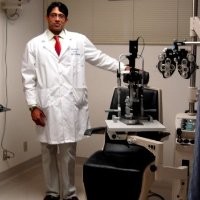Researchers from the National Institutes of Health (NIH) have made a breakthrough in understanding how primates, including humans, quickly identify faces. This discovery provides a deeper understanding of how we perceive and recognize faces and could provide insights into conditions such as autism, where these abilities are often compromised from a young age.
The research reveals that an ancient part of the brain known as the superior colliculus is central to this process. It activates the eyes and head to turn towards the face for an enhanced view. This improved perspective allows different parts of the temporal cortex to participate in more intricate facial recognition. The findings were published in the scientific journal Neuron.
“This newfound circuit elucidates how we can swiftly spot and focus on faces, even if they initially appear in our peripheral vision where visual clarity is relatively low. It could be this circuit that highlights faces, enabling the brain to recognize individuals and comprehend complex facial cues, thereby enhancing our social interaction abilities,” said Richard Krauzlis, Ph.D., of NIH’s National Eye Institute (NEI), who is the senior author of the paper.
In adult primates, specialized regions in the temporal cortex, known as “face patches,” develop. These patches enable the recognition and differentiation of individuals based on their facial features. However, to recognize a face, we must first look directly at it, as facial recognition relies on the high acuity vision that provides fine detail.
When babies are born, they do not possess the high acuity vision necessary for recognizing facial details, and the face-specific areas of their cortex develop later. Nevertheless, babies typically focus on faces very early in life, indicating the presence of another mechanism at work.
This led researchers to ask: how does the brain direct the eyes towards a face to better see the fine details? What causes this preference for faces before the brain’s “face patches” develop? How do the brain’s “face patches” gain the ability to understand faces?
Krauzlis and his team hypothesized that the superior colliculus, known for detecting objects, could be the missing piece of this puzzle. This part of the midbrain alerts the rest of the brain to the presence of an object, but does not identify what the object is. It functions incredibly swiftly and connects directly to the brain’s motor parts, guiding the eyes towards objects of interest.
The researchers tested their hypothesis by showing adult monkeys a range of images, including faces, biological non-face objects, and other items such as fruits or human-made objects. They then recorded the neuronal responses in the superior colliculus.
They found that more than half of the neurons they measured responded more strongly to images of faces than to other types of objects, and did so much faster. This suggests that the superior colliculus plays a crucial role in face detection.
Additionally, they discovered that this object detection process requires input from the early part of the visual cortex first, even though the superior colliculus can receive visual information directly from the eye. Given that the superior colliculus reconnects back to the visual cortex later in the visual processing pathway, the researchers suspect that this circuit highlights the significance of certain objects.
“We suspect this face-preference circuit could drive the brain’s development of advanced facial recognition processes. If so, deficiencies in this face preference in the superior colliculus might contribute to autism,” Krauzlis stated.
This study, funded by the NEI Intramural Program, also included contributions from co-lead authors Gongchen Yu, Ph.D., and Leor Katz, Ph.D., as well as Christian Quaia, Ph.D., and Adam Messinger, Ph.D.

Comments are closed for this post.